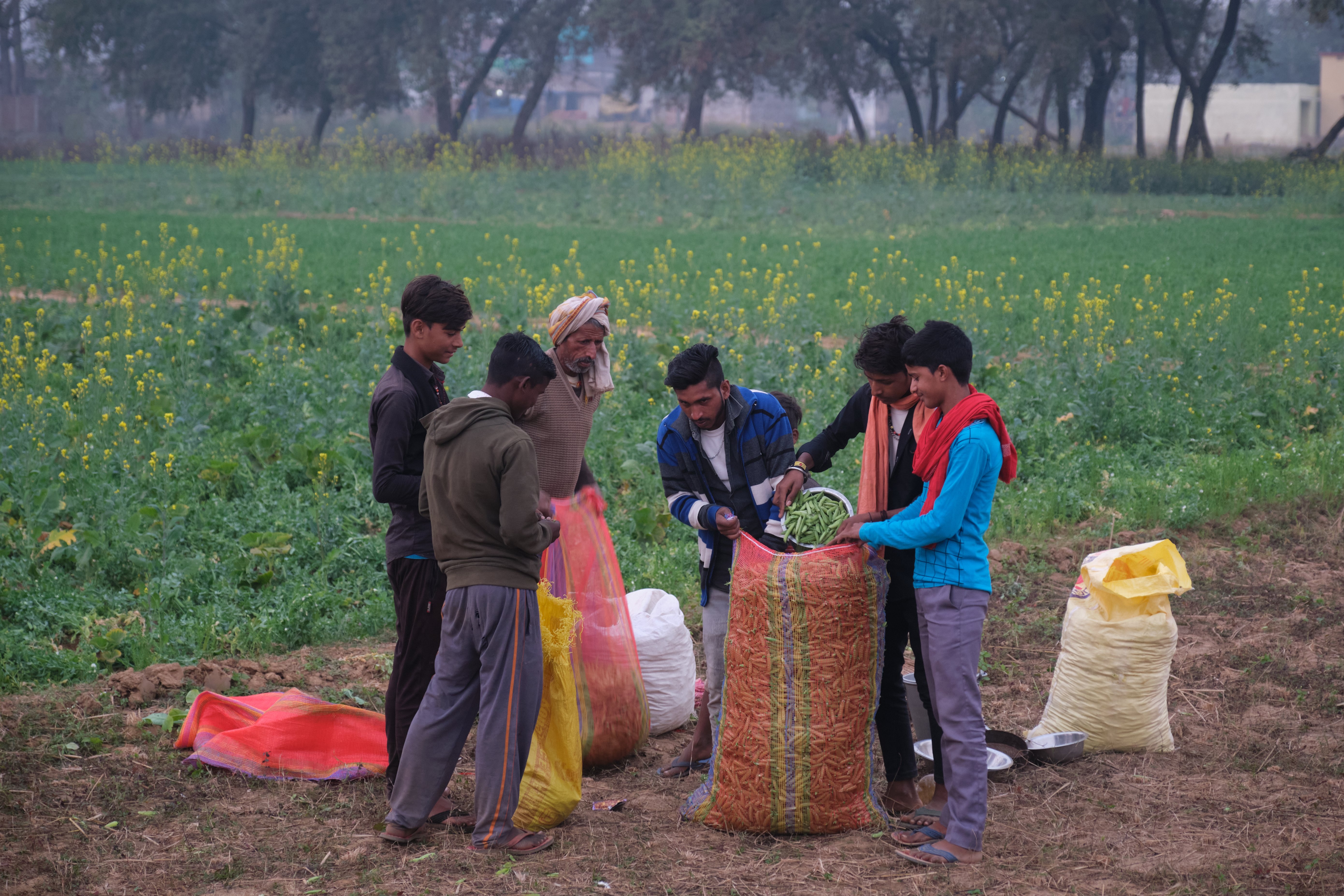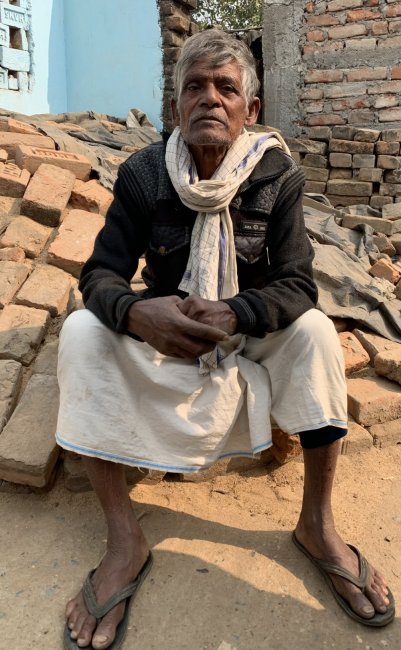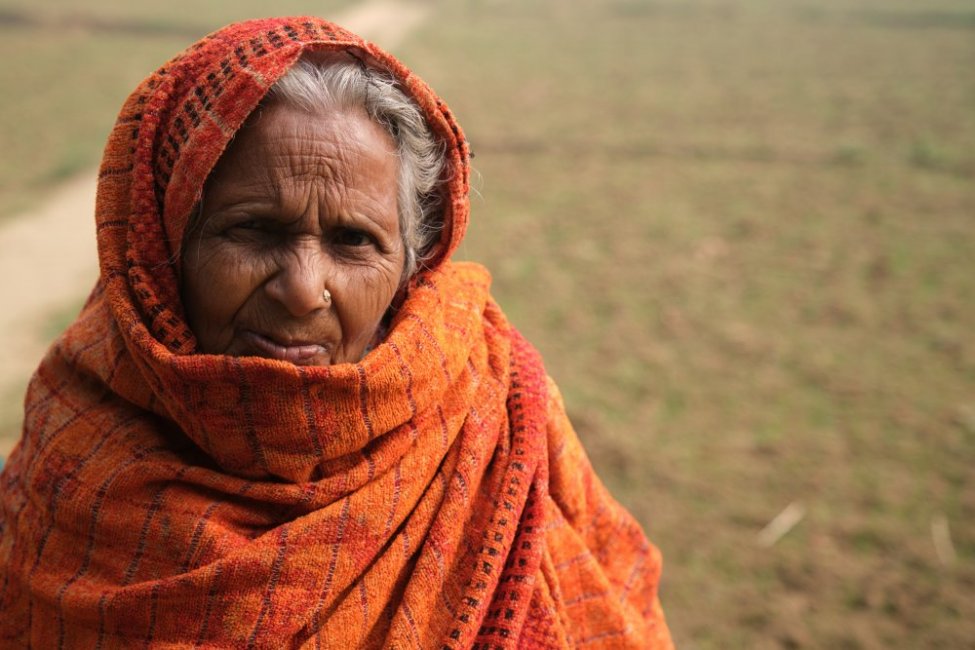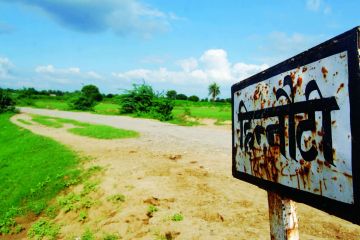
There, he received a parwana (land settlement document) for 1 acre from none other than the chief minister of Bihar. The document declared that the land was his to cultivate as long as he paid a tax of Rs 5 per year. Since the land was in the diara (floodplain wetlands) of the Sone river, it was cultivable in summer when the Sone retreats.
The allotment was part of a state scheme meant for landless Dalits.
Among agricultural households in India, Dalit households own merely 9.5 per cent of total land, a much smaller share in comparison with their share in population (16 per cent), according to a survey by the National Statistical Office, released in September 2021. Dalit families that own land hold small parcels. Average land holding for Dalit households (0.52 hectares) is half the average ownership for privileged castes (1.05 hectares).
Across India, 58.4 per cent of rural Dalit households are landless, much higher than households in any other social group, according to a 2013 survey of the National Sample Survey Office. Landlessness is particularly severe among Dalits in Bihar, where more than 85 per cent do not own any land other than homestead land. The Bihar government scheme aimed to provide them with access to land.
Besides this obvious gain, Ram was also perked up about the ripple effects.
Ram says it (ownership of land) empowered Dalits like him: “This document had my name on it. It gave me an identity, and a right that I thought nobody could take away.”
Until the sand mafia stepped in.
The school where Ram received his land document has now been gobbled up by the meandering Ganges and his land by the sand mafia of the Sone. At Haldi Chhapra village, 121 families including Ram’s, received land. Today, most of them don’t venture into that part of Sone diara for fear of the sand mafia.

A few feet below the fertile topsoil, which made the land the lifeline for Dalit families, lies construction-grade coarse sand. To extract this valuable minor mineral, the mafia forcibly excavates the land. The mafia uses money and muscle power to scare people off their land. Some Dalit families don’t go there at all; youngsters don’t even know where exactly the land their fathers received lies. Some who go there retreat as the mafia threatens them. A few persist and cultivate the land but they often lose the crop as the mafia destroys it.
The government hasn’t stepped in to support them even as it recognises their vulnerability, complains Ram. The government has now categorised these families as Mahadalit, a term coined by the reigning chief minister Nitish Kumar for the most marginalised among the oppressed castes.
The impunity with which Mahadalits like Ram are treated is driven by caste. In Bihar, the sand mining business is dominated by castes that are socially, economically and politically powerful. They use their power to victimise the oppressed castes.
The mafia turns murderous when opposed.
In August 2021, a Mahadalit man, Mahaveer Ram, was hit by a bullet when he stood up to protect his land from sand miners (listen to Mahaveer talking about the mafia’s attack in the CRIME chapter). Mahaveer, 35, is stressed about raising his four daughters. “What can I do? The mafia will displace me and I will have to migrate to a city. At least, I’ll be able to raise my family peacefully there.”
This pattern of victimisation of the oppressed is also evident on the bank of the Falgu river in Gaya district, where sand mining threatens the homes of Mahadalits, who live on government land. When they opposed mining, the mafia beat them up and slapped a police case against them. Now, they are living in fear and staring at homelessness.
***
On the other side of the Sone from Haldi Chhapra, near Semaria village, the Sone river bank resembles craters on the moon more than the vast expanse of farmland it once was. The mafia’s footprint can be seen everywhere. In the claw marks of excavators and the paw marks of earthmovers. In sand dunes and deep pits——some dry and others with remnants of the previous flood or the oozing groundwater. Patches of farming still hold out, surrounded by sand pits threatening to close in on them, as if the earth were swallowing the yellow fields of mustard. An under-construction waste treatment plant stands witness to the devastation.
The Sone flows by quietly. The boats plying on it are quiet too; they need to be. They’re smuggling Sone’s yellow gold— its sand.
For residents of Semaria, sand mining has ruined farmlands, caused depletion of groundwater and contributed to infrequency of floods that has resulted in lack of fertile new soil and reduced yield.



Moreover, the Sone itself is changing, acting strange to his people. (Sone is one of the few rivers, which are considered masculine in India where rivers are generally revered as mothers.)
The river didn’t turn red at all this year, says Jhoolan Manjhi, a boatman from Haldi Chhapra. He explains that every year, by June, the water at the confluence turned reddish and locals knew the Sone was bringing in lots of water and sediment. He says that sand mining has altered the river and its course and the Sone is turning away from the village.
Baloo ke maare ab Sono naa aawe chahata ihaan (Sick of sand mining, the Sone doesn’t want to come here anymore).”
***
Meanwhile, Dalits have started reacting to dispossession by the sand mafia. Having suffered for decades, they no longer want to be victims. This, however, has landed them in a Catch-22.
As illegal sand mining proliferates, Dalits, whose lands have caught the eyes of upper caste gangs, are cornered.
They are left with two options. The first is to take on the mafia’s armed gangs head on and stop mining on their land. For many poor families, the land in the diara, is the only asset they hold—providing food and income from farming. A few Dalits like Mahaveer have stood up to these gangs to protect their livelihoods. But most eschew this option.
"They have neither firearms and ammunition, nor the money to buy them to stand up to the gangs run by upper caste Yadavs, Bhumihars and Rajputs", says Vishal Kumar, a member of the CPI(ML) from Koilwar.
So, many opt for the compromise route by allying with one of the gangs, says Kumar. This doesn’t stop mining but brings in a share of profit to the Dalit landholder.
A rent is fixed for allowing sand mining on their land, and the gang takes control. The Dalits initially attempt to keep mining activities under control, says Kumar. “But I’ve never seen this working out for them.”
Once the gang establishes itself, it stops paying rent. “Now the Dalit has lost his land and any income from it,” says Kumar.
Now, the only remaining options are to approach a rival gang, or to forget about his land, Kumar explains. In the best case scenario, the new gang takes over the mining, pays rent for a while, and then gradually stops paying.
Frustrated and angry, some Dalits are picking up weapons and joining gangs too, says Kumar.
“The Dalit loses no matter what choice he makes.”
(This article was published in partnership with the Environmental Reporting Collective)






